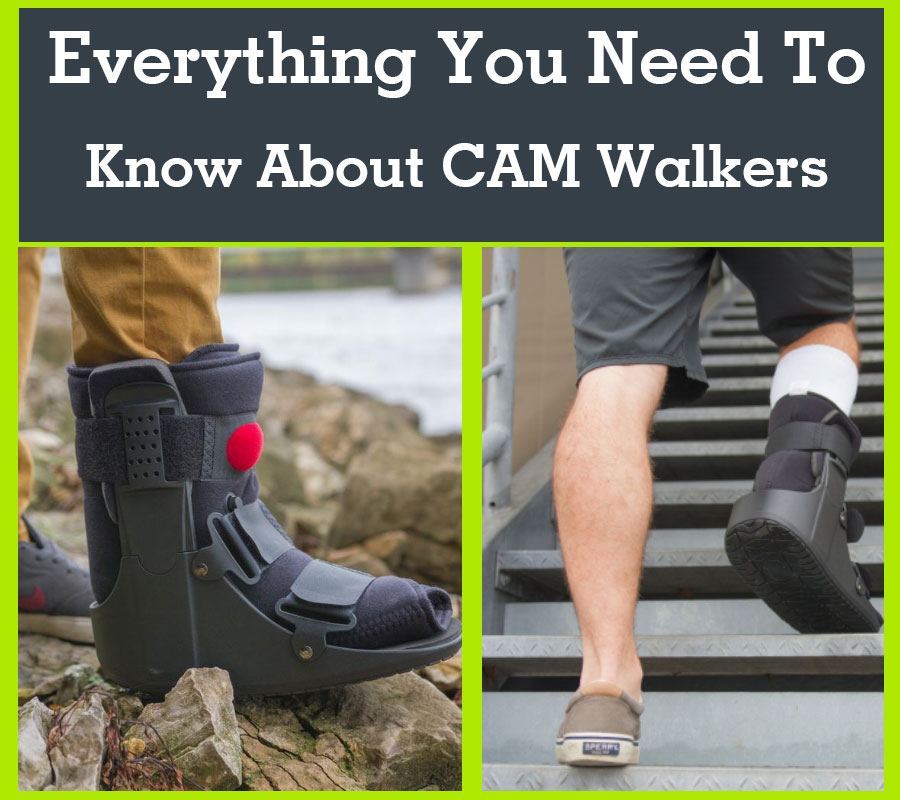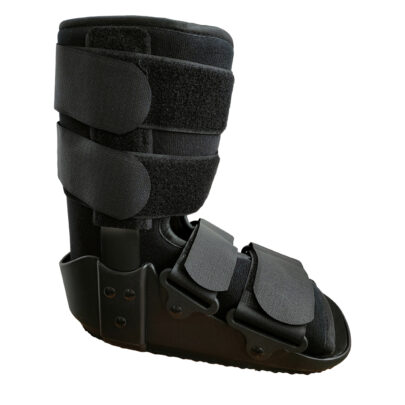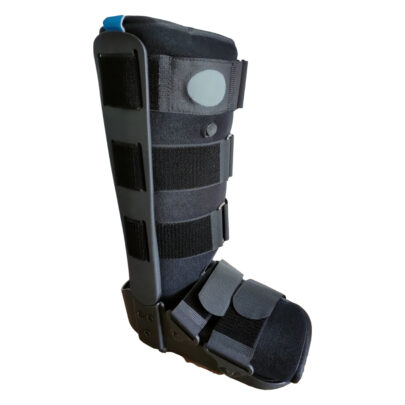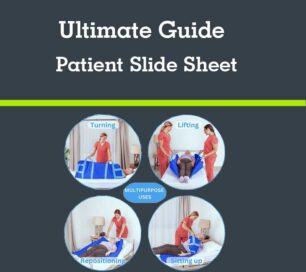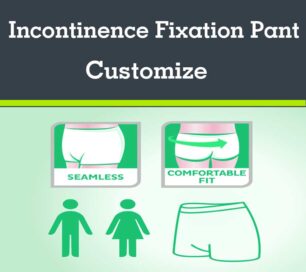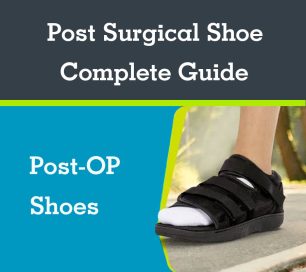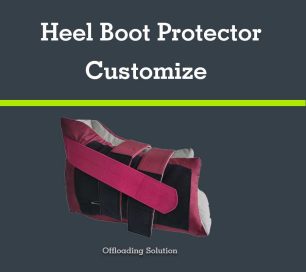Last Updated on 4 years ago by admin
A CAM walker is an adjustable orthopaedic device that helps to immobilise the leg and foot and it also looks like a boot, hence occasionally is called a ‘moon boot’.
What are Cam Walker Boots?
What does the CAM stand for? CAM stands for controlled, ankle, motion. Unlike casts, cam boots are adjustable, reusable, and fully removable medical boots that increase support your foot during the healing process after an injury. These boots come in many different sizes (short or tall) and features (air and non-air). Depending on what type of injury you have, a tall boot walker may be more beneficial compared to a short cam walker. In addition, you can choose to have a pneumatic air feature on your boot or have a non-air boot.
The air feature is extremely important for post-surgery patients because it is necessary to reduce swelling, pain, and improve the healing time of the injury. With this feature, you can control the level and amount of air that is pumped into the boot to support the foot.
Having a hard time figuring out which features you need? Our “Which Walker Boot is Right for Me?” blog post will help educate you on the benefits of each of the different features.
What does a cam walker boot do?
CAM BOOTS FOR TREATMENT OF FOOT AND ANKLE INJURIES
Walker boots are used for the treatment for ankle fractures and other lower extremity injuries can involve the use of Special Braces. The cam boot design is a lower extremity boot that provides support, protection and immobilization of the ankle after injury or surgery. If you have a prescription for a Cam walker brace, you should have a clear understanding of the type and extent of your problem. These medical devices have been widely used for treatment of sprains, fractures, diabetic ulcers and achilles tendon injuries/surgeries.
What conditions is a CAM walker used for?
Here are some injuries that recommend wearing a tall air cam walker:
- Acute Ankle Sprains
- Toe Fracture
- Metatarsal Stress Fracture
- Foot / Ankle Fracture or Break
- Post Achilles Tendinitis Surgery,Post foot and ankle surgery
Sometimes soft tissue injuries such as plantar fascial tears, chronic fascial related pain and achilles tendon injury.Any injury that requires rest and immobilisation will benefit from the CAM walker at some stage throughout your treatment plan.
Some injuries that recommend a short air cam boot:
- Lisfranc Injury
- Toe Fracture
- Metatarsal Stress Fracture
- Post Achilles Tendinitis Surgery
A few injuries that don’t require the air pump feature:
- Post-Bunion Surgery
- Heel Pain
Check out a variety of our foot braces and supports in case a cam walker boot isn’t necessary for your injury.
What’s the Benefits of Medical Cam Walking Boots?
There are multiple benefits that come with choosing a walker boot over a cast. Here are just a few examples:
- Encourages Walking During the Healing Process,Plastic casts also tend to become looser as time passes while wearing it. This ultimately can halt or slow down recovery time, whereas cam boots for foot fractures can be tightened every time to the desired level of comfort.
- Limits Ankle Movement,Cam walkers usually allow you to walk even with the most intensive injuries, they are meant to completely stabilize the leg, restricting any movement in the foot.
- Unlike a Rigid Plaster Cast, It Removes for Showering,These cam walkers are easily removed and taken off, which makes it convenient to shower and isn’t permanently on your foot.
- Adjustable Straps Keep Boot Tight for Ongoing Stabilization
- Another benefit is that these boots position and fix your ankle at 90 degrees, which can be especially helpful when healing. The degree can also be accommodated for different types of injuries to the ankle or foot.
Types Of CAM Walker Boots
There are standard and short walking boots to accommodate the patient’s height. A short boot may not offer adequate support to a patient taller than 6 feet. A standard or tall boot is ideal for calf muscle tears and provides more support for tibia or fibula fractures. Additionally, there are Regular and Pneumatic designs depending on the amount of cushion needed.
- Regular Walking Boots have a lightweight frame with support and adjustable straps.
- Pneumatic Walking Boots have an additional insert with a pump to add air for shock absorption and cushion to protect the soft tissue.
Medical Cam Walker Boot Manufacturers & Factory.
Metacare accept OEM custom products all made in China,contact us now for wholesale price.
Error: Contact form not found.
Tips when wearing a Cam Walker Fracture Boot
Although wearing a walking boot obviously isn’t the most comfortable and convenient, there are many ways to help override the discomfort and make time in a boot bearable.If you have an orthopedic boot, you are most likely having it on one foot. This makes wearing and walking more difficult, but not with the tips below.
Some tips for helping you wear a medical boot:
- Follow the doctor’s advice,Ensure that all the instructions from your physical therapists are put to action. If he says that you need to rest more and walk less, then so be it. If you need to practice only until you feel a tinge of pain, then don’t ignore.If your feet swell after the recommended walking duration, you should try to sit and relax. Elevate your foot and probably treat it with some ice cubes. If the swelling persists, or is accompanied by intense pain, you should see a doctor.
- Care when Wearing the boot:Your foot may have an injury at your toes or at the heel. If this is the case, you should always take care when wearing it. Finish with the injured part when wearing the socks. This will prevent stress on the area. When wearing the boot, ensure that the injured area is secure as you put it on. Avoid further injuries and opening up healing wounds.Loosen the straps and buckle whenever you are removing the boots. Let your foot have all the space it needs for a stress-free removal.
- When buying a cam walker, make sure that it completely fits your ankle. Never buy an oversized or undersized boot because it could cause future harm to the injury. Think about how your shoe normally should feel and fit, and choose an air cam boot that feels remotely the same.
- Pair a walking boot with an initial bandage or sock liner before placing the boot on your foot. This not only helps remove the rubbing that might occur from the boot but helps to add extra support to the injury.
- When putting on the air cam walker, slowly place your foot into the boot. It helps to make sure that it is placed correctly before positioning the velcro straps. In addition, never pull the straps too tight that it cuts out blood circulation.
- Avoid further injury—preventing knee, hip, and back pain—due to leg length discrepancy when wearing a medical shoe with the Evenup Shoe Balancer. The Evenup is the easy way to “even up” leg length from your hip to the sole of your foot, making walking with a shoe safe and pain free.
- Avoid walking in a wet boot at all costs.Walking in a wet orthopedic boot will add to the infection of your feet, causing you pain. This will further reduce your chances of a quicker recovery.During a shower, if you must be in your walking boot, then keep it dry. You can do this by wrapping a plastic bag around the boot, which is water proof. This should also come in handy whenever you want to walk in the rain.Wearing thick moisture-wicking socks during walking is a great idea. This will prevent sweaty feet from keeping the boots wet, while absorbing the sweat and keeping the feet dry as well.
- Try to walk straight from the knee.Bending your knee while walking may cause a strain on your foot, hence pain. Roll your feet to reduce the stress of walking if possible.
- Reduce stressing on the affected leg during walking.This will reduce the weight on the leg, aiding in fast recovery.
- Use a shoe balancer.This is a footwear that you insert on the shoe of your good foot. Hence, your feet will be on the same level, and walking will be easier.Whether in an orthopedic walking boot or a normal walking boot after recovery, these tips for wearing a walking boot will always come in handy;
- Clean your sock liners Frequently.The sock liner will get wet and dirty from feet sweat. It is advisable to clean it often. This will prevent your feet from getting an infection. Besides, washing the sock liner saves you from feet odor.
Compared to other retail stores such as CVS, Walmart, or Walmart, Metacare’s sock liners can be paired with any of our cam walkers, whether short, tall, air or non-air, these liners fit perfectly with each.
These sock liners are essential to use with those who have diabetes. These patients struggle with ulcers due to the poor circulation in their feet. Sock liners not only encourage adequate blood circulation but helps ward off against infections that could occur from these boots.
How do I get fitted for a CAM walker?
A CAM walker can take some time to adjust to and it is recommended that you have a Podiatrist assist you in fitting it up and guide you through the different phase of wear and adjustment.
When getting fitted for a CAM walker, the Podiatrist will:
- Ensure the correct size is chosen for your foot, ankle and lower leg shape
- Apply extra padding around bony prominence’s and areas to stop rubbing.
- Show you how to apply the boot properly and provide a gait assessment and some advice on how to best use the device to speed up the adjustment period.
- Consider the footwear you use on the alternate foot to reduce leg length discrepancy and compensatory limping.
- Refer for X-rays to assess the healing progress
- In some cases, customised inner soles may be needed to fit inside your CAM walker to decrease pressure from injured areas.
- It’s important to have professional guidance during this critical phase so that you can maximise the benefits of wearing a CAM walker to recover from your injury quickly and safely.
How to Put on Your CAM Walker Boot Device?
- Apply a long sock on the foot needing the boot.
- Loosen all Velcro straps and open foam liner.
- Sit with knee bent to 90º and slide foot into the foam liner. Make sure heel is all the way back and foot is fully seated in the liner.
- Close liner snugly around shin and foot.
- Beginning with the foot, secure the Velcro straps followed by the Velcro straps on the shin. Make sure to pull all the Velcro straps snug.
- If CAM Walker is an Aircast or Bledsoe, then add air by using the hand bulb provided onto valve until ankle feels a little pressure.
Wearing Schedule
Depending on the reason for using the CAM Walker Boot, the wearing schedule can vary. Follow the doctor’s guidelines.
If any redness, bruising, or blistering occurs and doesn’t disappear within 20 minutes, do not put the brace back on. Please contact your Ability orthotist to schedule an appointment for an adjustment.
Orthotic Device Cleaning and Maintenance
The foam liner can be washed by hand in cold water with a mild detergent and allowed to drip dry. The walker can be wiped with a damp cloth.
If the Velcro is not sticking well on the brace, check for lint build-up on the Velcro and remove it.
Important Information
Take the following precautions with your CAM Walker Boot Device:
- Be aware that volume changes in the body can affect how the boot will fit.
- Do NOT ever sleep in the boot, unless prescribed by your doctor.
- Be aware the boot has a sole attached. Be sure to choose a shoe that allows you to feel stable when walking.
FREQUENTLY ASKED QUESTIONS FAQS
Can a walking boot be worn all day?
Yes, some users will wear it all day if the doctor recommends all-day protection, even when sleeping or showering. In these cases, a Leg Cast Protector made of polyvinyl protects the boot. These cases are the minority and most users will remove the boot for showering or sleeping.
Do Cam boots come in left or right?
No, the boot is wide and will fit either a right or left foot.
Should a walking boot be worn tight?
The Velcro straps should be fastened snug but not too tight.
How does the user walk when wearing the boot?
The user should continue walking heel to toe. The key is to keep the toes facing forward and not turn outward.
How long is a Cam Walker Boot worn?
It can be prescribed for up to six weeks. It is dependant on the injury.
Most will spend 4-6 weeks for soft tissue injury, and 6-8 weeks plus for bone and joint injury or longer if required depending on other underlying health factors. Conditions such as osteoporosis and osteopenia will likely delay healing.
It is important to transition out of the boot in a gradual and controlled manner, following a personalised rehabilitation program whilst decreasing your use of the CAM walker as you return to full weight-bearing.
Can also refer for follow up imaging such as X-rays to assess injury progress and provide a customised rehabilitation program with a goal of getting the injured person back to doing what they love as soon and as safely as possible.
Are crutches needed when wearing a walking boot?
No, the boot is designed for weight-bearing and will redistribute weight in vulnerable areas as the user walks.
Can I drive with a walking boot on my left foot?
This device cannot be worn while driving, even if the boot is on the left (non-driving) foot. This is the law, folks! Also, this device cannot be worn in the shower because water can damage your equipment. Your boot may be worn in bed, but only if your provider directs you to do so.
Can wearing a walking boot cause pain?
A study published in the Journal of American Academy of Orthopaedic Surgeons titled Associated Joint Pain With Controlled Ankle Movement Walker Boot Wear showed that many patients experienced pain in the knee, hip, and/or back from the added weight and limb length discrepancy from the CAM boot.
What injuries need a walking boot?
Medical walking boots are used to protect the foot and ankle after an injury or surgery. They are commonly used for stress fractures, shin splints, fractures to the foot or ankle bone, and severe ankle sprains.
Can you bear weight in a walking boot?
Non-Weight-Bearing
Since you are not able to bear any weight on the leg, an assistive device, such as a walker or crutches, will be necessary for you to walk. When walking with your walker or crutches, keep your affected knee bent and keep your toes off the floor.

